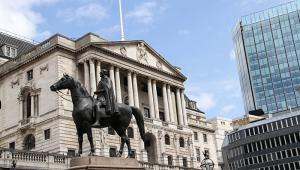
Nick Keeling
After the Omicron-induced hiatus in early December, gilt yields picked up steam through the holiday period and over the first month of the new year.
The culprits are once again inflation, or at least fear of inflation, which continues to dog the near-term economic outlook with its growing persistence, and the reaction of central banks to that development.
The Federal Reserve, in particular, has ramped up its hawkishness in the need to communicate its intolerance for rising inflation expectations.
As a result, financial markets are pricing ever earlier policy rate hikes, on the basis that if you’re going to act, better act quickly.
As Richard McGuire of Rabobank explained in a recent Arlingclose Trending Treasury webcast, central bankers appear to have reached a decision in how to deal with the issues currently at stake: inflation is well above target, raising concerns inflation expectations will become de-anchored.
Inflation is largely supply driven and therefore monetary policy cannot affect the main symptoms.
Tightening policy will have little effect on current inflation and could impact on the economic recovery at a time households are already under financial pressure.
While central bankers are fully aware of the above divergent issues (Bank of England governor Andrew Bailey, for instance, has set this out on numerous occasions), they appear to have set their stall out: tightening policy, which results in slowing economic activity but shows a strong hand on inflation, is more desirable than letting inflation expectations run out of control, which will require more significant policy action later.
So (further) policy tightening is in the offing in the UK and US, although, it has to be said, markets are effectively already doing central banks’ job for them.
Jerome Powell, chairman of the US Federal Reserve, noted recently that policy tightening will be carried out in such a way as to not affect the labour market, pointing to the significant number of vacancies presently recorded in the US that suggests more jobs than job seekers.
This will obviously be a difficult balancing act, given that policy tightening depresses demand, reduces spending and thus reduces the number of jobs necessary (both filled and vacant positions). The comment could have been taken as a signal that monetary tightening needed to be measured but this does not seemingly sit with the market’s current projection of five US rate hikes from March this year.
UK markets also seem to be heading that way too despite already being one rise into the cycle.
However, that is not to say that the market does not have an issue with this position, which can be seen in the shallow bond yield curves currently on display.
In the UK, the 10-year gilt yield is currently 1.29%, compared to the two-year yield of 1.05%.
The two yields are effectively communicating that there is limited room for rises in policy rates before the pain outweighs the benefit.
Financial markets are therefore not seemingly getting carried away with policymaker rhetoric; yes, rates may need to increase to head off inflation expectations, but no, this cannot be done without damaging economic activity thereby reducing demand-led inflation and mitigating the need for excessive monetary tightening.
We cannot dispute the fact that bank rate is going to rise further so the BoE can display a strong stance on inflation and move away from emergency rate levels.
However, given the uncertain economic outlook, the difficulties facing household finances from higher inflation and the supply issues driving current inflation, can policy rates realistically rise to 1.5% as well as the BoE engaging in quantitative tightening?
At some point inflation will ease from current rates of price growth – base effect pressures will wane, commodity prices could fall as supply issues are sorted, and labour pools will grow again as those who left in the pandemic re-enter the market.
At the same time, if monetary and fiscal policy are tighter, demand and growth will be slower.
Inflationary pressures could therefore be much reduced, placing pressure on central banks to loosen policy.
Or perhaps it makes sense not to tighten policy as much as markets fear?











